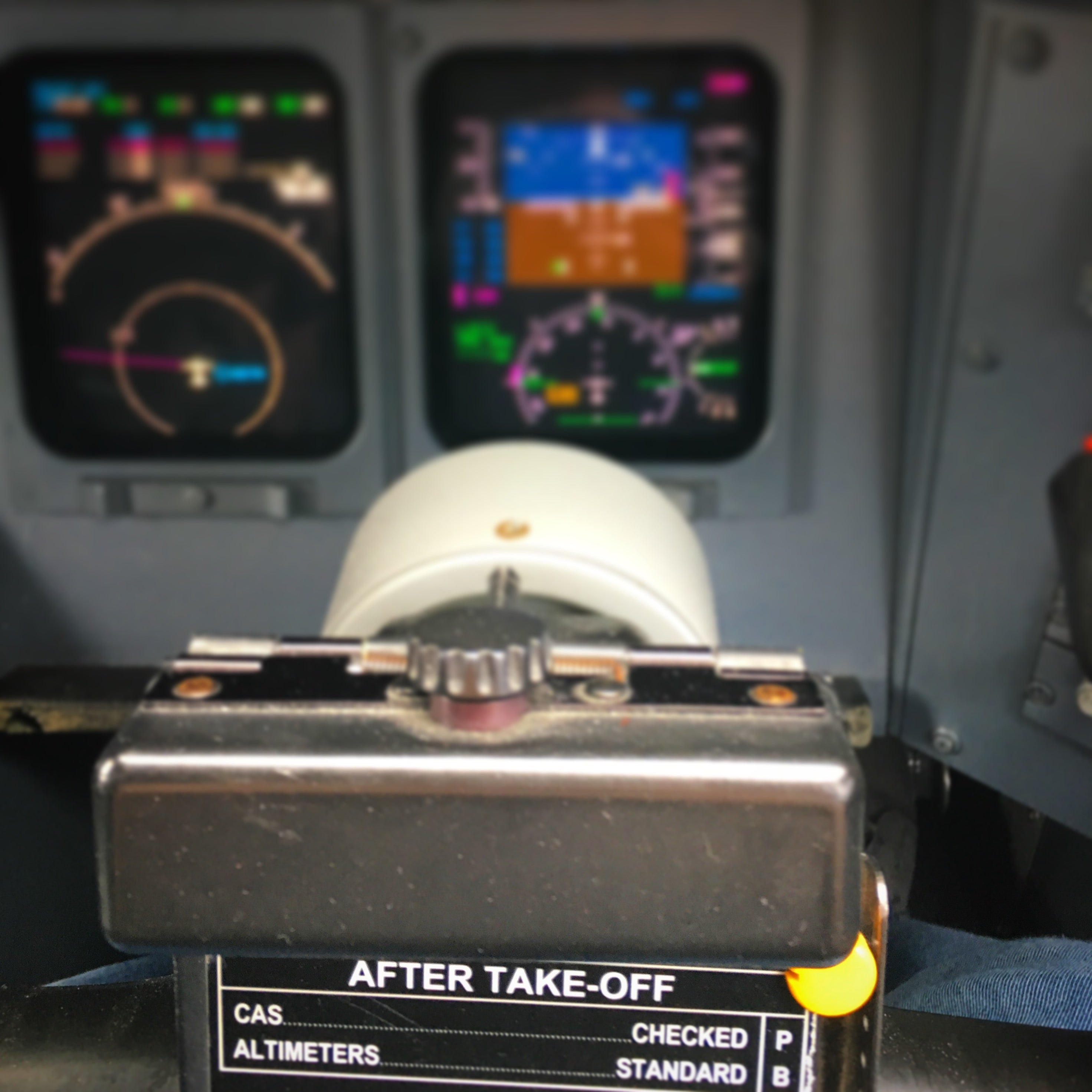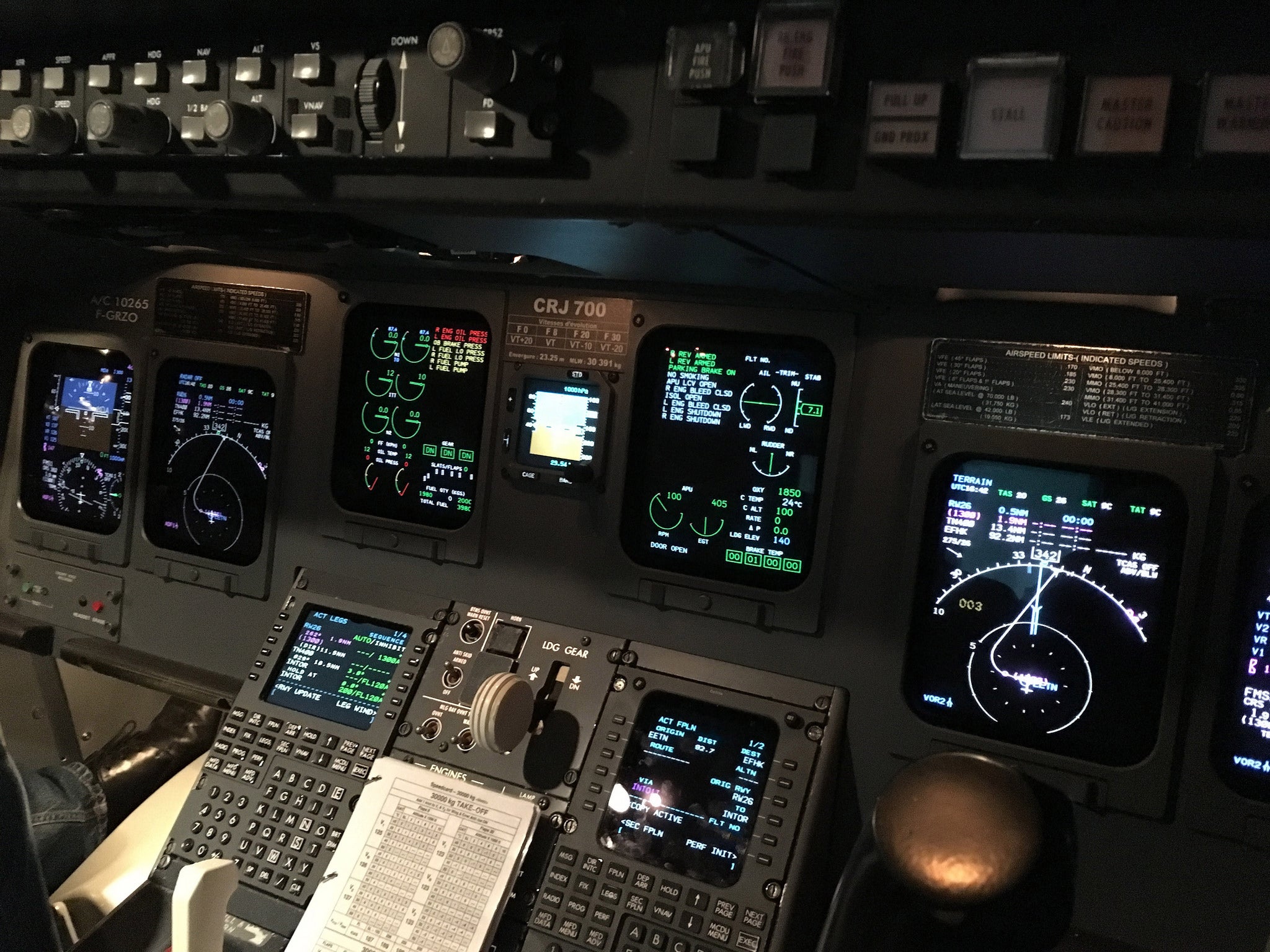 "Jetstreamer" (jetstreamer)
"Jetstreamer" (jetstreamer)
06/08/2016 at 17:16 ē Filed to: planelopnik, crj, bombardier, aviation
 5
5
 15
15
 "Jetstreamer" (jetstreamer)
"Jetstreamer" (jetstreamer)
06/08/2016 at 17:16 ē Filed to: planelopnik, crj, bombardier, aviation |  5 5
|  15 15 |

Another follow-up on my !!!error: Indecipherable SUB-paragraph formatting!!! , going from flying old small turboprops to regional jets that are much, much younger and more modern as a result.
Quick recap; For the last four years I had been flying for a company on a fleet of !!!error: Indecipherable SUB-paragraph formatting!!! aircraft. The company got in financial trouble, fucked me around one time too many and I quit my job without having an alternative. I turned out to be a lucky bastard and got two job offers shortly after quitting, one of them being on the same old type of plane and the other one on this more modern jet. The jet is a step up in my career and will open more doors later on, so I went for it, got the job and recently started the training.
If you have very little interest in aviation you might not be aware of how the process of getting trained on these aircraft works. I often get asked if I can fly ďthose Boeings and stuffĒ when people hear Iím a pilot. Itís not that simple unfortunately. After basic pilot training you might have a so-called ďclass ratingĒ. As the name implies, this allows you to fly all kinds of planes that fall into a certain class, for example single engine piston planes. But not all single engine pistons fall into that class though. Some might need extra training or endorsements because they are tail-draggers, have complex systems like a retractable gear, are high-powered and so on.
The next step up from these endorsements are type ratings. Basically planes that require an entire certified training course before you are allowed to fly them. These range from Cessna Caravans (under some authorities these require type ratings) to the big boys like the Boeing and Airbus offerings and everything in between.
So, with that explanation out of the way... I started the type rating for the Bombardier CL65 (CRJ 700/900) late in April. After 96 hours of theory and 32 hours of simulator training including a skill test (checkride), I finally finished today by making my first 6 landings on the actual aircraft.

CRJ700 Simulator
During the typerating you donít focus so much on day to day operation. Itís all about emergencies and abnormal situations. In about 8 sessions of 4 hours each, you get to deal with rejected takeoffs, engine failures directly after rotating (lifting off from the runway), smoke in the cockpit, decompression, fires, double engine flameouts, emergency descents and a lot more. It can get quite intense.
After these 8 sessions there is another 4 hour skill test, where you put everything you learned into practice during an exam.
The last step is the ďbase trainingĒ, the six landings on the actual aircraft. Depending on your experience level and operator approvals these can also be done on the simulator (called ZFTT, zero flight time training). I was actually quite happy to do it on the aircraft, as the simulator is not great at ground handling and simulating landings.
So today I flew through some light showers and a slight crosswind on my way to my first actual landing. It was awesome. Of the six landings, I managed to make two or three that could be considered smooth, the others were average at best. Practice makes perfect!
The next step will be some extra training in company procedures during day to day operations and then proceeding with actual revenue flights in line training (flying with a training captain during the first X amount of hours or sectors to get completely comfortable with the plane and operations).
I hope this was at least a slightly interesting read for some of you, thanks for sticking with it to the end. Feel free to ask me questions, Iíll try to answer as well as I can.
 Shane MacGowan's Teeth
> Jetstreamer
Shane MacGowan's Teeth
> Jetstreamer
06/08/2016 at 17:29 |
|
So, what youíre saying is, you will be able to fly those Boeings and stuff soon?
 Jetstreamer
> Shane MacGowan's Teeth
Jetstreamer
> Shane MacGowan's Teeth
06/08/2016 at 17:34 |
|
At least two types of the stuffs yeah. :)
 Flyboy is FAA certified insane
> Jetstreamer
Flyboy is FAA certified insane
> Jetstreamer
06/08/2016 at 17:35 |
|
Cool write up, especially for people who might not know much about the process.
As for me, Iíll get there eventually. Cessnas for now.
 Captain_Overboost
> Jetstreamer
Captain_Overboost
> Jetstreamer
06/08/2016 at 18:03 |
|
Soooo, from your comments I'm guessing if I put in an hour or so on MS Flight Simulator I'll be ready for carrier ops in one of them there Fighter jets? What? Another 30 minutes or so for rotary wing? Cuz I really want to add Apaches to my resume.
 vondon302
> Jetstreamer
vondon302
> Jetstreamer
06/08/2016 at 18:26 |
|
Nice post. Is there alot of openings in the pilot trade? You got 2 offers in what sounds like a short amount of time.
 Jetstreamer
> Flyboy is FAA certified insane
Jetstreamer
> Flyboy is FAA certified insane
06/08/2016 at 18:43 |
|
Enjoy every minute in the Cessna :).
Yeah, just keep working and keep a positive attitude and you can go a long way from Cessna to A380. I remember one of my instructors going from CRJ -> A320 -> A340 -> A380.
 Jetstreamer
> Captain_Overboost
Jetstreamer
> Captain_Overboost
06/08/2016 at 18:46 |
|
Yeah man, just press Ctrl+E to start the engine and don't forget to extend the landing hook with Shift+Q :)
 Jetstreamer
> vondon302
Jetstreamer
> vondon302
06/08/2016 at 18:53 |
|
Well, there are openings, but in most cases you need to already have experience on the type of aircraft. If you donít have it, most companies nowadays will want you to pay for the typerating. I was pretty lucky to get these job offers to be honest. One of them was because I had the right experience on the right type of plane. The other one was, I think, because I made the right impression in the past on some people at my current new employer.
A lot of others are less lucky, classmates from flight school that have had to find another career after years of no luck finding a job.
 Captain_Overboost
> Jetstreamer
Captain_Overboost
> Jetstreamer
06/08/2016 at 18:54 |
|
Hahaha. All kidding aside I've always dreamed of taking private pilot lessons and getting my license. So reading anything aviation related is great to me. Keep it coming. Very interesting.
 vondon302
> Jetstreamer
vondon302
> Jetstreamer
06/08/2016 at 19:20 |
|
Thx. Keep the posts coming.
 You can tell a Finn but you can't tell him much
> Jetstreamer
You can tell a Finn but you can't tell him much
> Jetstreamer
06/09/2016 at 08:53 |
|
For the base training do they set aside planes for training purposes, or do you do that on ferry flights or planes that are in maintenance and need a shakedown flight?
Congratulations on the new job and keep up the posts. It is interesting to hear about this kind of stuff first hand.
 Jetstreamer
> You can tell a Finn but you can't tell him much
Jetstreamer
> You can tell a Finn but you can't tell him much
06/09/2016 at 16:26 |
|
Some operators will have one or more aircraft dedicated to training purposes, I believe Ryanair has a 737-700 mostly for this kind of stuff. Others might simply do the training at times when no revenue flights are scheduled for an aircraft, and that is what happened in my case as well.
We filled our aircraft up with enough fuel for our training flight and for the next revenue flight shortly after that. When we were done we parked her at the gate and she was good to go for normal operations again.
 ttyymmnn
> Jetstreamer
ttyymmnn
> Jetstreamer
06/09/2016 at 18:40 |
|
Nice post. Good stuff. I was reading today over on Unitedís blog or whatever it is about a retiring captain and an up-and-coming young pilot. The retiring captain said:
Over the next 20 years, weíll hire more than 10,000 pilots based on retirements and attrition alone. In that same time period, U.S. airlines will need to hire more than 50,000 pilots.
It sounds like your timing might be spot on.
 Jetstreamer
> ttyymmnn
Jetstreamer
> ttyymmnn
06/09/2016 at 19:05 |
|
Well, Iím in Europe so US carriers are pretty much out of the question. Besides that, Iím always very wary about those kind of optimistic predictions. Basically at any point in time over the last 10 years or so there is supposed to be a retirement wave coming soon and pilots should be in high demand again soon. Meanwhile, I believe that in the Netherlands alone there were about 1200 pilots without jobs. Though that number might have dropped recently, because there is a minor upswing going in hiring, but mostly people moving from steps low on the ladder to a bit higher. Not so much people going from sitting at home to getting a flying job unfortunately.
Either way, I should be set for the next three years at a minimum. Hopefully gain enough experience in the right seat to be eligible for the left seat in a year or perhaps two. Positive outlooks for the coming years at least.
 ttyymmnn
> Jetstreamer
ttyymmnn
> Jetstreamer
06/09/2016 at 19:11 |
|
Positive indeed, and you sound like youíre well positioned to take advantage should the doors open higher up. Also, I didnít realize that you were in Europe. So no, these numbers, however rosy (remember, this came from a UAL company site) donít apply to you. But as you suggest, they may point to a general uptick in the number of hires. Best wishes, and I look forward to your next post.